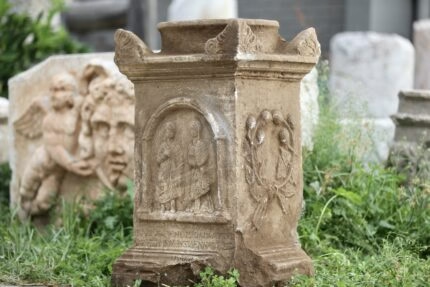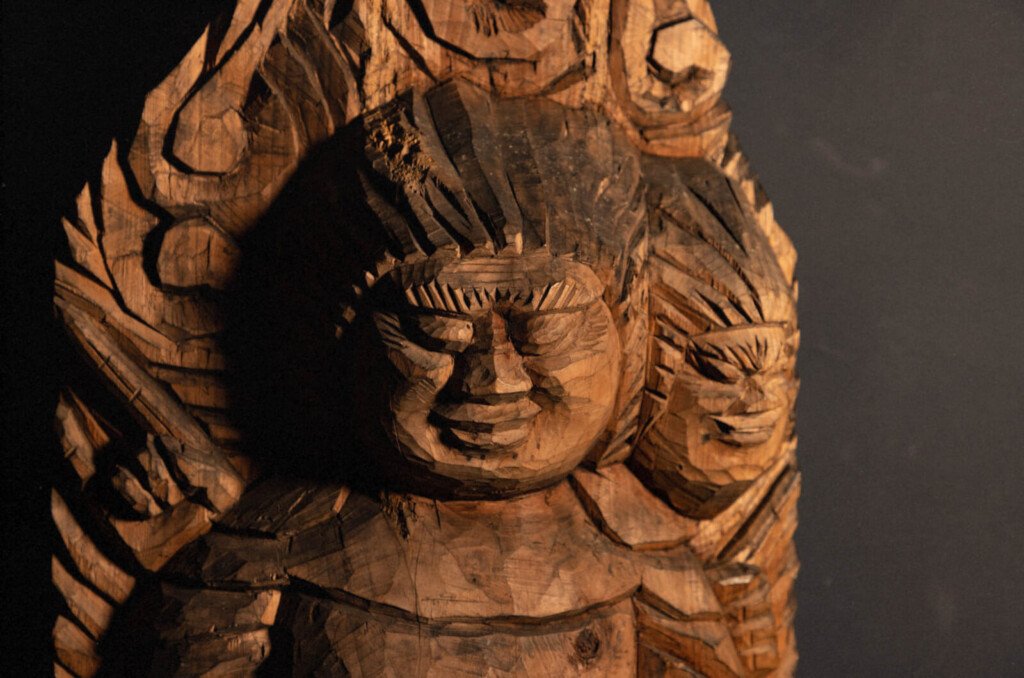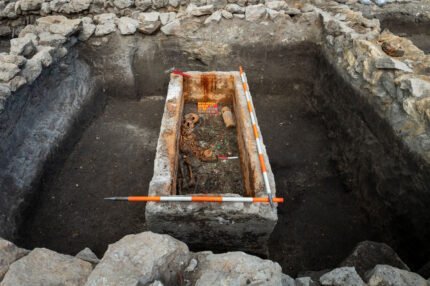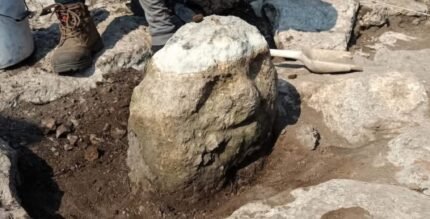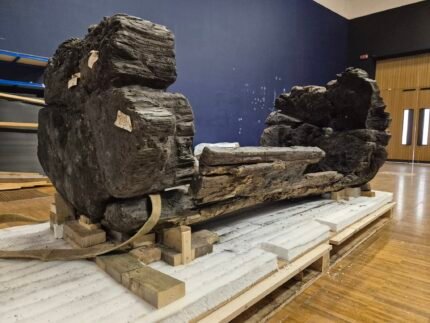7th c. icon Madonna of the Pantheon restored – The History
The Madonna of the Pantheon, an extremely rare surviving icon from the Byzantine rule of Rome, has been restored. The Madonna of the Pantheon dates back to the consecration of the ancient Roman temple to all the gods as the Christian Basilica of Santa Maria ad Martyres on May 13th, 609 A.D. The temple was given to Pope Boniface IV by the Byzantine Emperor Phocas and the pope transformed it in a church dedicated to Mary and all the Christian martyrs who had died from persecution. The Madonna of the Pantheon was likely given to Boniface by Phocas as part of the gifts and offerings made in honor of the consecration of the new church.
The icon is a Virgin Hodegetria, a type of Christian iconography that depicts Mary holding the Baby Jesus seated in her arms and pointing to him with her right hand. The motif was popular in Byzantine art starting in the 5th century. Legend has it that the first of these icons was painted by Luke the Evangelist, no less, and was discovered in the Holy Land by the Byzantine Empress Aelia Eudocia, wife of Theodosius II.
Painted with egg tempera on an elm wood panel, the Madonna of the Pantheon is a fragment of the original which was much larger, longer and made of three boards. Art historians believe the Madonna was once represented in full figure, very rare for an icon of this type, its grand dimensions created to suit the grand dimensions of its home. It was venerated by pilgrims for centuries, and many layers of varnish and overpaint were applied in the attempt to preserve it even as the wood and original paint deteriorated. These interventions backfired, of course, leaving the icon in atrocious condition.
It was last restored in 1961, after which it was moved to a small chapel within the Pantheon for security reasons while a 1959 copy was placed in the apse above the altar. The new restoration employed far less invasive methods with a focus on removing the artifacts of prior interventions and filling in the many areas of paint loss using materials and techniques that are fully reversible if it becomes necessary down the road. The diagnostic and restoration processes took eight months. The results are excellent, the golden glow of its background and the original palette revived .
 Last year, Italy’s Culture Ministry announced to general outrage that the Pantheon would for the first charge visitors an entry fee. The default ticket would cost €5 (discounts for people 18-25, free for residents of Rome, children and the disabled) with 70% of the proceeds going the Culture Ministry to fund the maintenance of the Pantheon and 30% going to the Church. Entry would still be free the first Sunday of every both, although tickets would have to be booked in advance.
Last year, Italy’s Culture Ministry announced to general outrage that the Pantheon would for the first charge visitors an entry fee. The default ticket would cost €5 (discounts for people 18-25, free for residents of Rome, children and the disabled) with 70% of the proceeds going the Culture Ministry to fund the maintenance of the Pantheon and 30% going to the Church. Entry would still be free the first Sunday of every both, although tickets would have to be booked in advance.
Despite the howls of protest over a church charging admission, the most visited monument in Rome didn’t miss a beat. In the first month since ticket sales began on July 3rd, 2023, almost 230,000 visitors crossed the Pantheon’s threshold, putting €865,000 into its coffers, far exceeding expectations. The Pantheon is flush now, and the Culture Ministry is using that money to improve access to the ancient temple and restoring its cultural treasures like the icon and the ancient polychrome marble floor.


 Anal Beads
Anal Beads Anal Vibrators
Anal Vibrators Butt Plugs
Butt Plugs Prostate Massagers
Prostate Massagers
 Alien Dildos
Alien Dildos Realistic Dildos
Realistic Dildos
 Kegel Exercisers & Balls
Kegel Exercisers & Balls Classic Vibrating Eggs
Classic Vibrating Eggs Remote Vibrating Eggs
Remote Vibrating Eggs Vibrating Bullets
Vibrating Bullets
 Bullet Vibrators
Bullet Vibrators Classic Vibrators
Classic Vibrators Clitoral Vibrators
Clitoral Vibrators G-Spot Vibrators
G-Spot Vibrators Massage Wand Vibrators
Massage Wand Vibrators Rabbit Vibrators
Rabbit Vibrators Remote Vibrators
Remote Vibrators
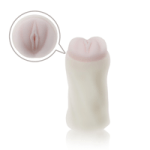 Pocket Stroker & Pussy Masturbators
Pocket Stroker & Pussy Masturbators Vibrating Masturbators
Vibrating Masturbators
 Cock Rings
Cock Rings Penis Pumps
Penis Pumps
 Wearable Vibrators
Wearable Vibrators Blindfolds, Masks & Gags
Blindfolds, Masks & Gags Bondage Kits
Bondage Kits Bondage Wear & Fetish Clothing
Bondage Wear & Fetish Clothing Restraints & Handcuffs
Restraints & Handcuffs Sex Swings
Sex Swings Ticklers, Paddles & Whips
Ticklers, Paddles & Whips






